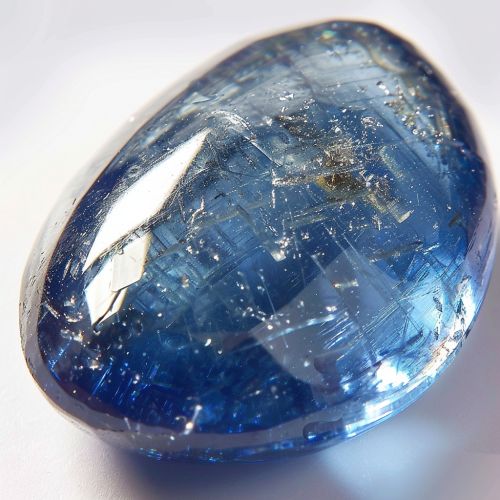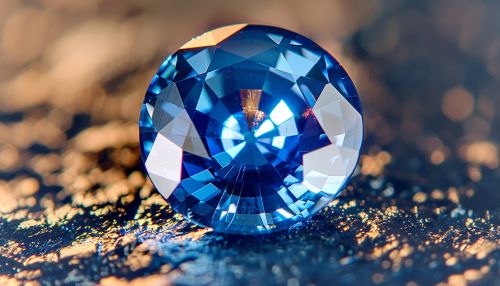Sapphire
Introduction
Sapphire is a precious gemstone, a variety of the mineral corundum, which is an aluminium oxide (α-Al2O3). It is typically blue in color, but natural "fancy" sapphires also occur in yellow, purple, orange, and green colors; "parti sapphires" show two or more colors. Red corundum stones also occur, but are called rubys not sapphires. Pink-colored corundum may be classified either as ruby or sapphire depending on locale. Commonly, natural sapphires are cut and polished into gemstones and worn in jewelry. They also may be created synthetically in laboratories for industrial or decorative purposes in large crystal boules.


Physical and Chemical Properties
Sapphires are composed of aluminum oxide crystals, which belong to the trigonal crystal system. The hardness of sapphires on the Mohs scale is 9, making them the third hardest mineral, behind diamond at 10 and moissanite at 9.5. Sapphires are also known for their durability, which makes them an excellent choice for jewelry that will be worn daily. They have a specific gravity of 3.99 to 4.00 and a refractive index of 1.762-1.778. The presence of iron and titanium impurities are responsible for sapphire's blue color.
Geological Occurrence
Sapphires are found in certain types of metamorphic and igneous rocks. The most valuable sapphires are found in three locations: Kashmir in India, Myanmar, and Sri Lanka. Sapphires from each of these three regions have distinct qualities that set them apart from sapphires found elsewhere. Other notable locations where sapphires are mined include Australia, Thailand, Cambodia, Madagascar, and the United States (Montana).
Extraction and Processing
The extraction of sapphires involves both open-cast and underground mining methods. Once the sapphires are extracted, they are processed to remove impurities. This involves washing the sapphires and sorting them by size and color. The sapphires are then cut into the desired shape and polished. The cutting and polishing process is crucial in determining the value of the sapphire, as it affects the gemstone's brilliance and color.
Uses of Sapphire
While sapphires are most commonly known for their use in jewelry, they also have a number of industrial applications due to their hardness and other physical properties. They are used in some types of scientific instruments, such as infrared optical components, and in certain types of electronic devices. Sapphires are also used in the production of scratch-resistant windows and screens for electronic devices, such as smartphones and watches.
Synthetic Sapphires
Synthetic sapphires, also known as created or lab-grown sapphires, are made in laboratories using methods such as the Verneuil process, the Czochralski process, and the flux method. These methods allow for the production of large, high-quality sapphires that can be used in a variety of applications, from jewelry to industrial uses. Synthetic sapphires can be distinguished from natural sapphires through gemological techniques, such as microscopic examination and spectroscopic analysis.
Cultural and Historical Significance
Sapphires have a rich cultural and historical significance. They have been prized as gems for thousands of years, and were worn by royalty in ancient Greece and Rome. In the Middle Ages, sapphires were believed to have healing properties and were used in medicinal treatments. Today, sapphires are still highly valued and are often used in engagement rings and other fine jewelry.
